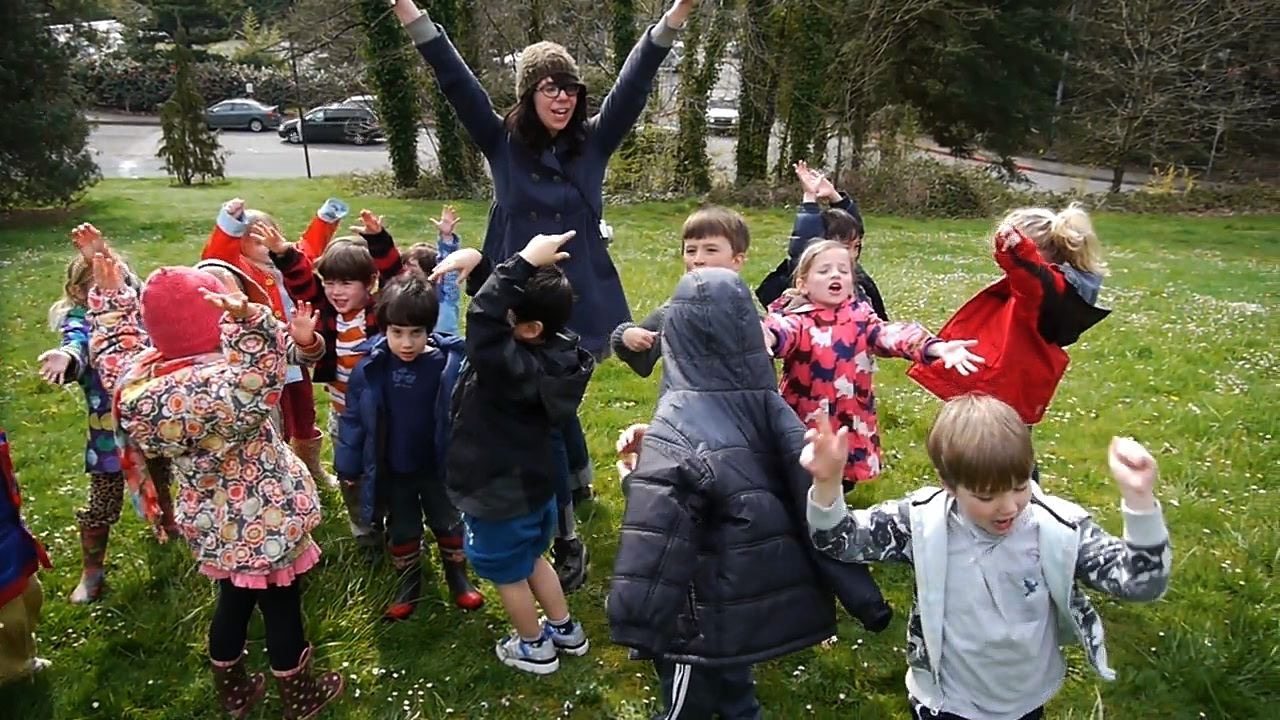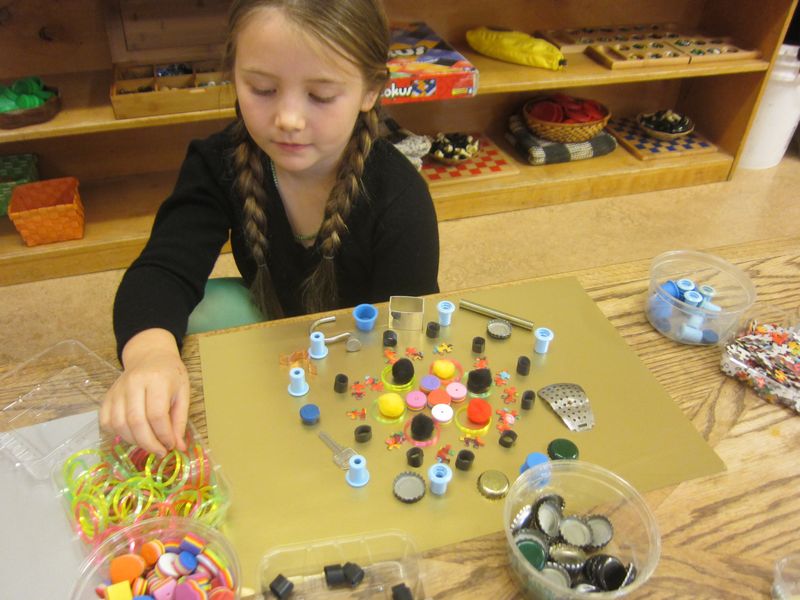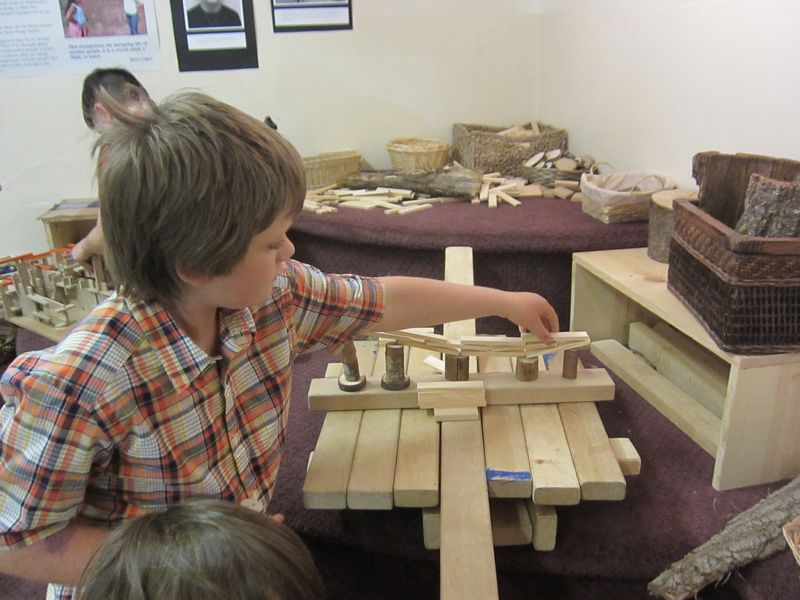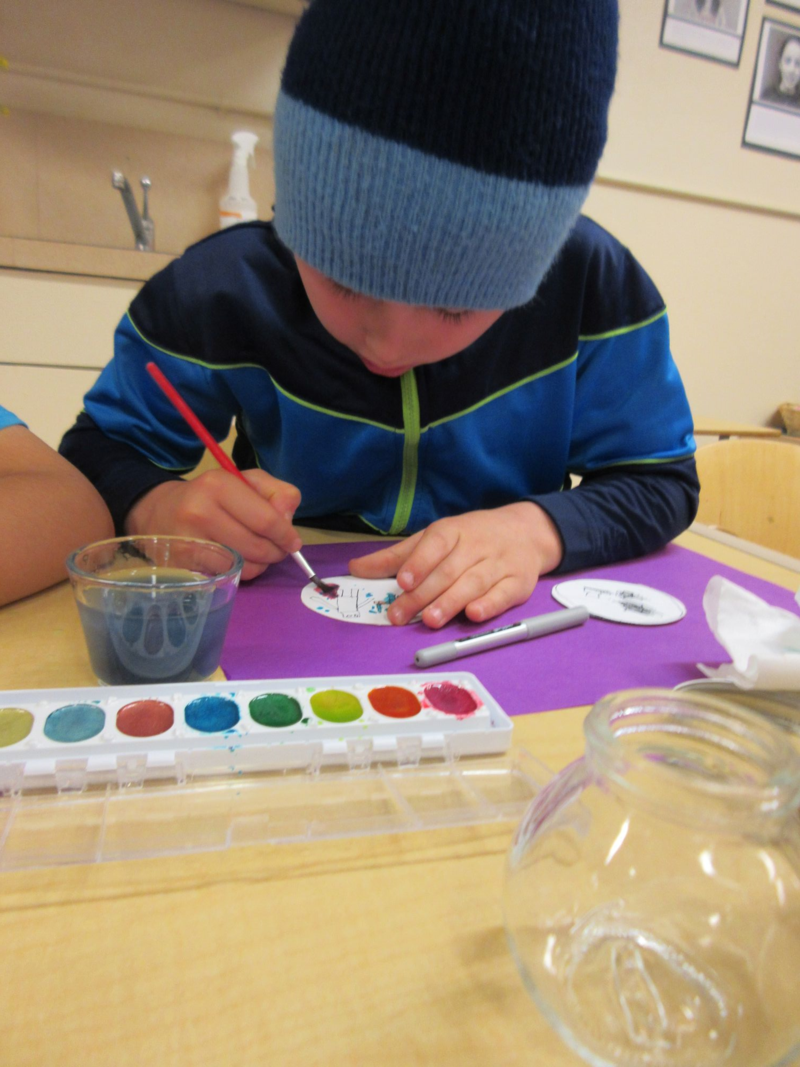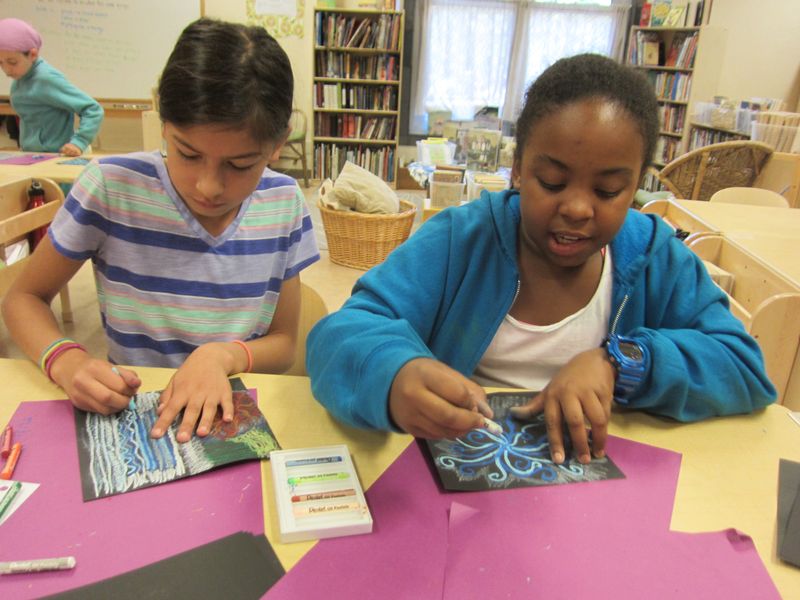What does it mean for a school to be guided by “a pedagogy of play?”
As teachers of the oldest students at Opal School, we were curious about what the children would have to say about play. We wondered what would happen if we invited them into this research with us. What might we learn? What connections would we see? What patterns might begin to emerge?
With a bit of background around our own intentions to explore the idea of play and an invitation to use materials to develop and share their theories, children were invited on the very first day of school to crack open what play means to them:
KC: My [painting] kind of shows a rush of play. Like you have all these ideas and when you find one you get a rush. When you start playing it’s not like you know something without an idea. The idea is the play.
CR: Usually when you’re playing your brain is either really full or really blank. This is showing when it’s really blank. For example, if you’re trying to make a shot in basketball or score a goal its full. But when you’re on a huge roller coaster, it’s blank. When something is going super fast and it’s not your choice of what to do, so your mind is blank. You don’t really have control—you don’t really have anything to think about. But it is still fun.
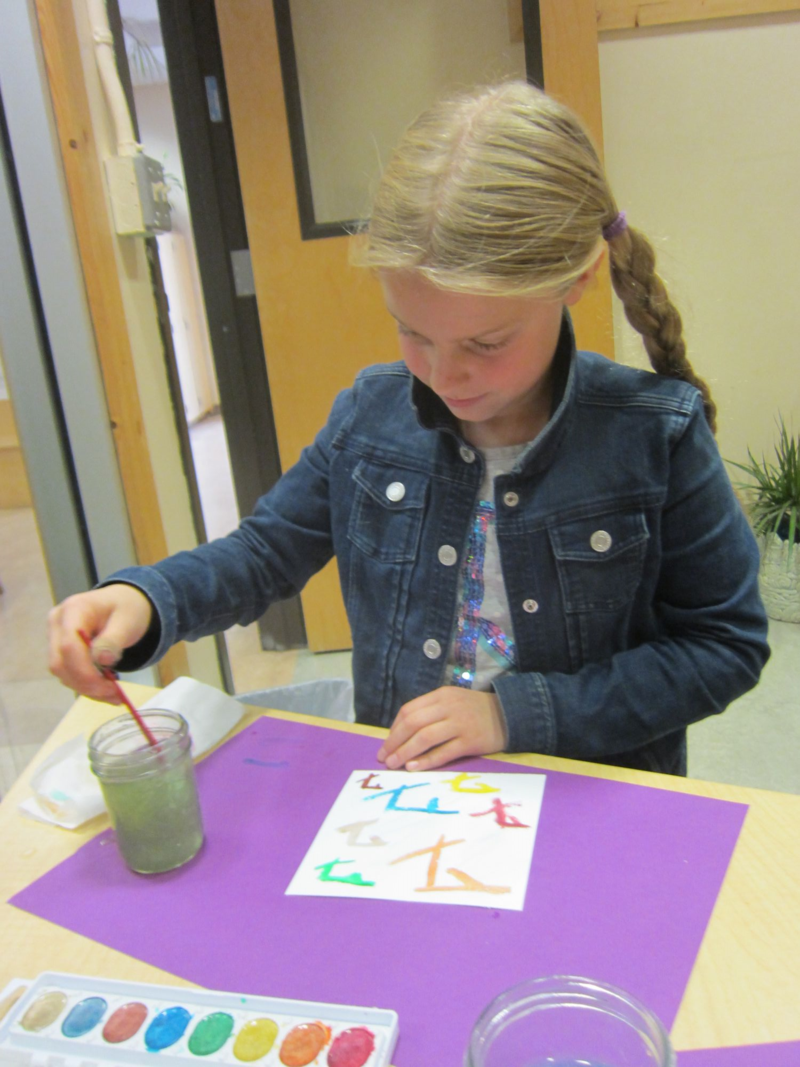
SN: In play I feel like you are experimenting. You want to play so you can figure out what play is. My sculpture shows an explosion. Do I like it? Do I dislike it? Am I wondrous? These are the questions of play.
BV: It shows that when I play, the imagination part feels like my real life, like I am actually living what I am imagining.
CG: The outside is where it starts, like curiosity and sometimes sadness. The black pieces are like mystery. The puzzle pieces are mystery and imagination. Then joy is a part of it and that’s loving and connecting with the play, the people, and what you are playing with.
NJ: There is happiness and sadness. The happiness almost always overrules sadness. Even though the sadness needs to be there. You need to be sad sometimes.
After some time in materials Opal 4 came back together to share their reflections and continue a dialogue around play.
PK: When people think about play they all think about it differently. They’re all right. Because you do it—it’s right for you.
SN: You have to remember maybe there’s different definitions of fun or play. It can’t only be one solid thing.
ABM: I was thinking about stories people shared and what we talked about last year in history and it seems like emotions were causing arguments in wars and emotions seem to be really connected to play too. Emotions are strongly connected to play and history.
MC: There’s the hard and the daring. It’s not just fun. It’s all a part of play. To get to play you have to do the hard stuff too.
CG: There’s all the feelings and emotions that come with play and they all make play.
SM: It’s really about how you interpret play. Play is more than just one word. Play is a way to express yourself. Interpretation is how everyone thinks. No one has one idea. There’s perspective that can come in.
From the very first day of school, it’s apparent that the children in Opal 4 are already chewing on some big ideas. Threads of perspective-taking, curiosity, imagination, empathy, and critical thinking run through their theories and dialogue.
Although we don’t yet know exactly how these threads will show up throughout our year or where they will take us, we do know that this is a dialogue that we will continue to revisit. Over time we will pay attention to the ways in which our definitions change and our thinking evolves.
Here are some of the questions we are holding as we move forward:
-How might researching play influence the kinds of questions we grapple with and which stories from history will capture our attention this year?
-How can play combat indifference and complacency?
-What’s the role of play and imagination in navigating conflict?

